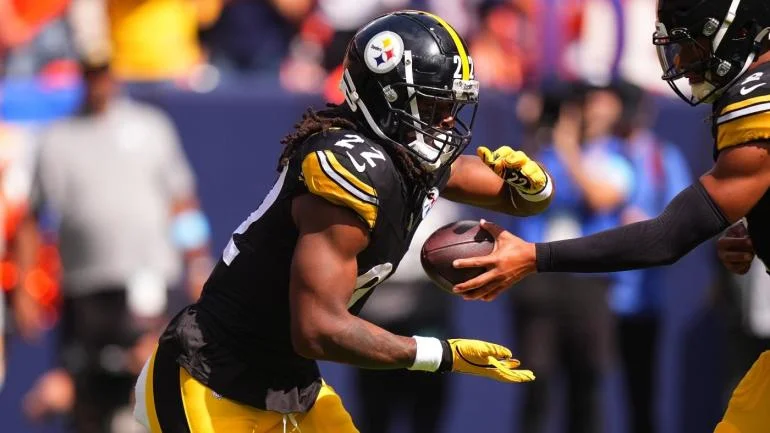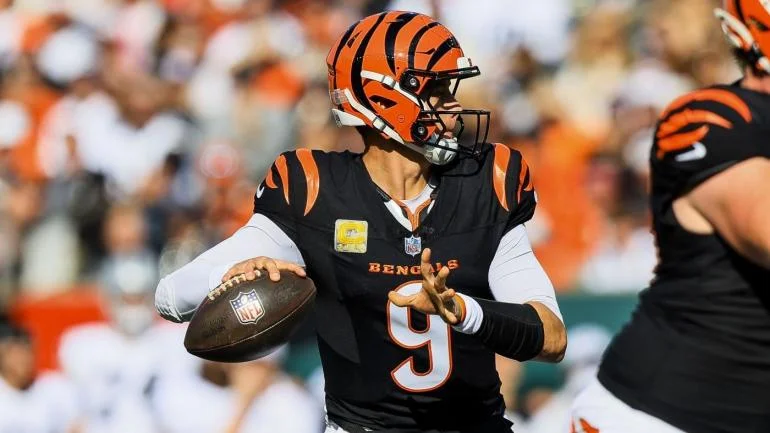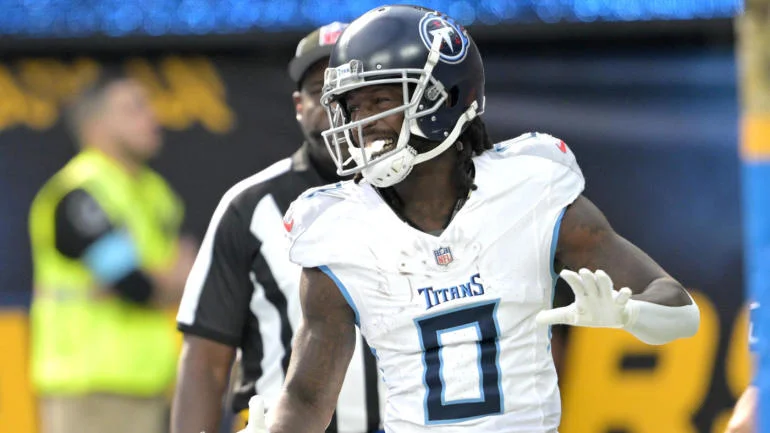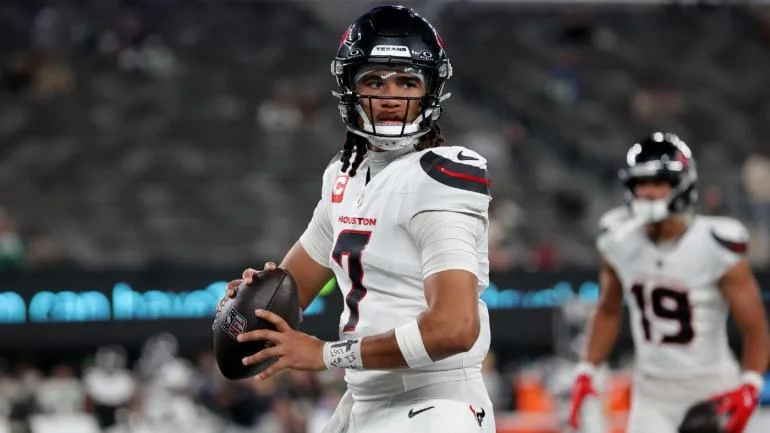HOUSTON, TX – NOVEMBER 30: The Houston Texans huddle before playing the Tennessee Titans in a NFL game on November 30, 2014 at NRG Stadium in Houston, Texas. (Photo by Scott Halleran/Getty Images) Texans fans would prefer we just forget about Brock Osweiler’s time with the team.
Welcome to the final installment of “Was It Worth It?” where every few days we will be exploring (okay, *I* will be exploring, and you mainly reading about it) all of the noteworthy QB dilemmas teams around the league faced this offseason and how they handled them, with my analysis of whether or not they have made the right decision. This week: the Houston Texans. This will take a while, so get yourself a drink. Hell, get me one, too.
In March of 2016, the Houston Texans signed Brock Osweiler to a 4 year, $72 million dollar contract. How did it work out? ~Sigh~ Roll the clip.
Was it worth it? Clearly not.
Does more really need to be said? Does anyone disagree with this? Fortunately, that’s not what this article is about. As you may remember from the article intro, these focus on this offseason’s decisions, which means the focus will need to be on the decision to trade Brock, along with a 2018 2nd round pick, to the Cleveland Browns, just to be rid of his guaranteed salary.
I can’t talk about the Brock decision without addressing the concept of being “a quarterback away.” Texans fans have been hearing (and often repeating) this phrase pretty strongly since 2014, which is where I will be starting. And, since I am a Texans fan, I will be writing this as a fan. Bear in mind, however, that I have frequently been in the minority when it came to thoughts on our quarterback situation. I am not claiming, in any way, to speak for my fellow Texans fans. This would be a great time to reference the comments made by other Texans fans in the subreddit, but THE BASTARDS DIDN’T SAY ANYTHING! Really. Here’s the link, not one comment. What makes it better is that it got upvoted a lot, as though everyone who saw it wanted to make sure someone else saw it and threw their two cents in. It was such a phenomenally un-Texan (the state, not the team) thing to do.
For me, 2014 was a wonderful year. After finishing 2-14 in 2013 and trading away Matt Schaub in the offseason, we wanted to believe that we could bounce right back to being the double-digit win team we’d been prior to our collapse. However, it wasn’t looking great. We were clearly rebuilding under new Head Coach Bill O’Brien, and first overall pick Jadeveon Clowney struggled to get on the field. In addition, $21 million of our cap was tied up in dead money. I predicted a winning season but wasn’t really expecting a strong team. After all, Fitzpatrick (signed that offseason to a 2 year, $7.25 million contract) was going to be better than the previous year’s Matt Schaub, but aside from that, we didn’t seem to be much better.
We started the season 2-0 for the fifth year in a row, with Ryan Fitzpatrick playing extremely well on paper, though it should also be noted that not much was being asked of him (only 46 total plays over both games). Week 3 against the Giants crushed that. With no run game to lean on, Fitzpatrick had to actually be the focus of the offense, and it did not go well. The next week, though, he completely redeemed himself (in my eyes) against the Bills. He gave an amazing pre-game speech, in which he promised to lead us to a win…and then he did. It wasn’t a beautiful game. As with the previous week, there was no run game to fall back on. In fact, Fitzpatrick led the team in rushing with 14 yards on 5 attempts. Arian Foster and Alfred Blue combined for 15 yards on 17 attempts. Fitzpatrick’s performance wasn’t amazing, and just about anyone would agree that Randy Bullock and J.J. Watt were the real stars that week, but the job got done. From there, though, it only went downhill. Our next three games were all losses, and he wasn’t exactly electrifying in any of them. At this point, even I was starting to doubt that we were a good enough team, though I didn’t doubt Fitzpatrick. Remember that he only cost us $3.4 million that year. In my opinion, he was actually playing much better than a QB with that kind of cap hit should have been (a realization that later sparked my first-ever article). He finished the season with the 7th-highest TANY/A in the league that year, but with the second-lowest plays per game. With a good system around him, he was passable, but the games where there was no run support to lean on, he just couldn’t get it done. As an analyst, I get that he was no “answer,” but as a fan…it’s different. If you want to see how I felt, I wrote about it here.
Bill O’Brien would bench Fitz after week 9 with the Texans at 4-5. I didn’t like it, but it did make sense. We’d traded with New England to get Ryan Mallett for the last year of his deal, and naturally, we wanted to see what he could do. In addition, with the rest of our season being slightly easier, an improvement at QB could still mean a playoff spot, whereas a decrease would only cost us a game or two. The potential payoff did exceed the potential loss, and it gave us a chance to evaluate an unknown. I have to admit that it was a good decision. Granted, that decision would become irrelevant for multiple reasons, but I wanted to spend some time on it as it might have become a trend for the Texans. Also, for future arguments, note that Case Keenum started 2 games in 2014 and won both of them, though admittedly both were against weaker opponents.
The Texans barely missed the playoffs in 2014, and Brian Hoyer was signed as a free agent to a 2 year, $10.5 million contract. While still a cheap deal, it was worth a bit more than Fitzpatrick’s. Mallett was extended and Fitzpatrick was dealt to the Jets. It seemed that O’Brien preferred Mallett and Hoyer, each of whom was more expensive than Fitz. He was probably right, but I feel that this is another example with his impatience at QB. Again, Fitzpatrick was one of the better QBs that year, stat-wise. In addition, we were going into 2015 with an extra 4.1% of our cap not tied up in dead money, AND we had our 2014 first overall pick back as well. Change was not needed for us to become a stronger team. A QB competition between Hoyer and Mallett went on throughout the preseason, and it would be unfair to say that Hoyer won. In truth, neither played well, but Mallett made the bigger mistakes. Hoyer was named as the starter and assured that he would not be on a short leash.
He was benched in Week One.
I’ll never understand it. Hoyer obviously played badly, but Hoyer posted a TANY/A of 4.19 against the Kansas City Chiefs, who had a great defense, and yet that performance wasn’t enough to last ONE GAME? For comparison’s sake, Osweiler would average a 4.18 in 2016, and he lasted until week 15. To add to the confusion, Mallett was named as the starter the following week. This was such a misguided decision, but now we’ll make it even weirder. The next week, when Mallett started, he posted a TANY/A of 3.69. He played the full game. He would remain the starter through week 5, improving his TANY/A all the way to 3.79. One could assume that he remained the starter because the only option was to go back to Hoyer, who had already been discarded. I believe that Hoyer would have played better in 2016 had we stuck with him, had the players known that he was our guy unless he consistently failed to measure up. As a result of moving on so early, his confidence was shattered and the players didn’t want to fight for him. Once the player/coach relationship was sufficiently destroyed, Hoyer was named the starter for the rest of the season. After a devastating loss to the Miami Dolphins (down 41-0 at the half), Bill O’Brien apologized to the team and admitted that benching Hoyer was a mistake. He was right.
The Texans, somewhat re-formed, went on to win the division and get destroyed by a Chiefs team that had outplayed the Texans in 2013 and earlier in 2015 as well. It was seen as the nail in the coffin for Hoyer, but I think that writing had already been on the wall. I just don’t believe Hoyer could have fully trusted O’Brien after such a betrayal.
After two years of “disposable” QBs, and overall teams that seemed just shy of good enough, I was PUMPED for 2016. I predicted a 10-6 record before we made a single signing. Why? Because, for the first season of the O’Brien era, we would have real money on the field. The Texans had a lot of cap space in 2016, largely due to moving on from dead money hits. Only 5.6% of the cap was from cap penalties. All we needed to do was not fall apart. Despite the overwhelming sentiment from the fans, the Texans weren’t “a quarterback away.” We were there with anyone who wasn’t horrible. I genuinely wouldn’t have minded Weeden or Savage being the starter in 2016.
Despite an odd decision to let Brandon Brooks leave in free agency, the Texans were looking very strong. Rick Smith had signed Brock Osweiler to a now-famous contract. A lot of attention was paid (understandably so) to the fact that he was receiving $18 million a year, but I was more focused on the fact that we were stuck with him for two years. Bill O’Brien, who had started 6 QBs (Fitzpatrick, Mallett, Keenum, Hoyer, Yates, and Weeden) over two seasons, now would have to commit to one QB for at least two years. General Manager Rick Smith apparently recognized that our team had enough talent, but needed stability at QB, someone who, even if not that great, could play the part of the leader the team needed to rally around. O’Brien was, it should be noted, good at working around a QB’s weaknesses (5 of his then 18 wins were with backup QBs), so if he was forced to stick with a player, he would find a way to make him work (or go with option B and clash with him all season). I have another possible reason for this decision, but let’s go with this one for now.
The season started off well. Despite an interception on his first drive as a Texan, the wounded Chicago secondary gave up two touchdowns, contributing to a 23-14 win. Optimism abounded since no one knew that a pedestrian 9-point win would be our largest margin of victory throughout the entire season. That bears repeating: a single digit win with an early turnover was as good as it would get.
The next 12 weeks saw 6 wins and 6 losses. While the 7-6 record wasn’t ideal, it had been a very tough schedule, with only two of those ten games against opponents going on to finish with a losing record. The record itself was perfectly acceptable. What was not AT ALL acceptable was the point differential. In those six wins, Houston had outscored opponents by 32 points. In the six losses, however, Houston was outscored by 86 points, with a seven-point loss to the Raiders being the smallest margin of defeat. Speaking of the Raiders game, Brock looked about as good in that one as we’d seen him, despite lasers in his eyes and some heavily suspicious calls made by what I’m sure was a completely unbiased officiating crew.
Then came Jacksonville in Week 15. After a mutually scoreless first quarter, things started getting out of hand fast in the second. In just over five minutes, Jacksonville put up 13 points on three scoring drives, with two of those scores following Osweiler interceptions. To everyone’s surprise, it was Tom Savage that would step out on to the field on the next possession, and while all Houston buttholes were clenched due to seeing the 18-million-dollar man benched, the decision immediately proved defensible, as Savage led the Texans on an almost six-minute drive down the field. Even though it ended stalled on the 1-yard line, it did result in points, as Jacksonville gave up a safety on their next possession. Savage threw for 260 yards with no touchdowns (though one TD-scoring drive), but no interceptions as well, which was enough for a one point win over the Jags. After the game, O’Brien said he made the decision to help them win, which was an easy claim to make thanks to us actually having won.
Savage would go on to start against Cincinnati, and again against Tennessee until a concussion sidelined him. While there was no denying that the offense was more fun to watch during the basically two games he played, it should also be noted that Savage’s appearances combined for zero touchdowns, zero interceptions, and one fumble, with a TANY/A of 4.93, which is impressive only when compared to Osweiler (good news for our offense next year, right?). It should also be noted that he has played in four games, and been injured in half of them, plus missed a season due to a preseason injury. I really hate discussing injuries as part of player evaluation, but I do feel that it was a factor in the decision to trade up in the draft for DeShaun Watson.
Before going into that, I said that I would address the Texans being “a quarterback away.” Let’s look at Bill O’Brien’s three years and his record with quarterbacks.
2014: Record with presumed starter Ryan Fitzpatrick: 6-6. Record with alternate starter Ryan Mallett: 1-1. Record with backups: 2-0.
2015: Record with fringe starter Brian Hoyer: 5-5. Record with seeming actual starter Ryan Mallett: 1-2. Record with backups (now including Hoyer): 3-0
2016: Record with mandated starter Brock Osweiler: 7-6. Record with Savage: 2-1 (the one loss due to both resting starters and Savage getting injured).
Over those three years, Bill O’Brien is 22-21 with his named starters, and 5-0 with his backups. The number of variables here is staggering, and this is also a small sample size, but does this look like a team that can’t succeed without a quarterback? No. To me, it looks like a team that WILL succeed as long as it isn’t being held back by unnecessary quarterback drama and wasting all their cap space on desperate bids.
Now, on to DeShaun Watson. As is standard for rookies, I won’t discuss Watson as a prospect. Instead, I will discuss the decisions to trade away Osweiler and draft Watson, a pair of decisions that freed up about $15 million in cap space, cost two first rounders and a second-round pick, and, most notably, started Bill O’Brien on what will become his 9th starting QB in four years as a head coach. There hasn’t been any official word on that, but I think we can be confident that Watson will see the field at some point in 2017. I think that Savage will begin the season as a starter much for the same reason that Ryan Mallett was named the starter mid-season in 2014, but I also think that between injury risk, underwhelming play, or just the excitement of a new QB, the odds are just too high. I hope I’m wrong. I really hope that O’Brien isn’t trigger happy on QB changes and that Savage is good enough to keep the job. However, if O’Brien’s eagerness to bench isn’t an issue, then there is another problem: Rick Smith.
I mentioned a little under 900 words ago (holy shit this article is long) that Rick Smith might have had another reason for signing Osweiler, who Bill O’Brien had not been asking for, and who reportedly did NOT get on well with the third-year head coach. If his reason wasn’t to force O’Brien to confront and overcome a weakness, what could it have been? I would venture that Rick Smith was trying to poison the well.
To be clear, I do not think Rick Smith is trying to ruin the Houston Texans. However, I do think he is willing to ruin the team in order to keep his job secure, and, going into 2017, it remains very secure despite a disastrously bad decision. As I said earlier, a lot of cap space became available last year, and Rick Smith used up all of it on multi-year deals with significant guarantees, despite the fact that several key young players were eligible to negotiate new deals. I remembered thinking at the time that those deals better work out because if they didn’t, no worthwhile GM would want the task of trying to rebuild the team while being saddled with Rick Smith’s “vision” for two years. Now, with Brock gone, cap space is no longer an issue (though looming deals for Hopkins, Hal, and Clowney mean it’s certainly no strength), but draft capital most certainly is. Houston will have no 1st or 2nd round pick in 2018. I, once again, could not help but notice that the prospect of being the Texans GM next year is far from a bright one. Rick Smith’s job, for one more year, is looking pretty secure. Meanwhile, the Texans are looking a little less dominant in the division, and while 2017 will likely show a higher level of play, 2018 is not looking too great.
Was it worth it? That depends. If O’Brien really has learned his lesson from 2015 and Rick Smith really is trying to make the team the best he can, then I think there is a lot to look forward to. However, I don’t know if I can trust both of those assumptions.
The next article will be…sometime next year. It’s been a blast writing these articles, and I want to thank everyone who took the time to read them (especially this one) and gave constructive feedback. I hope you come back next year.




